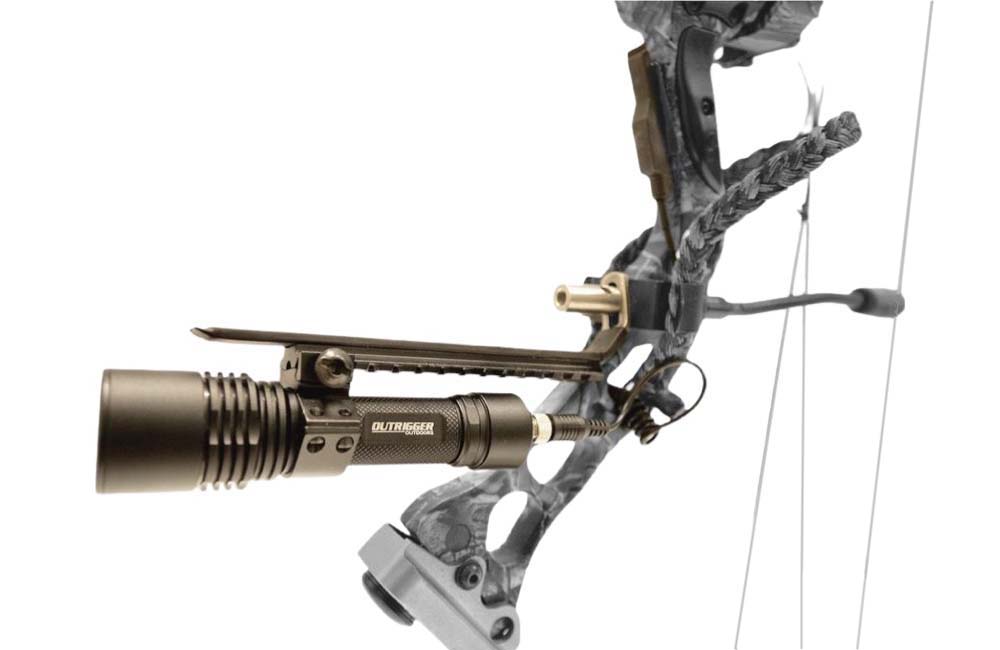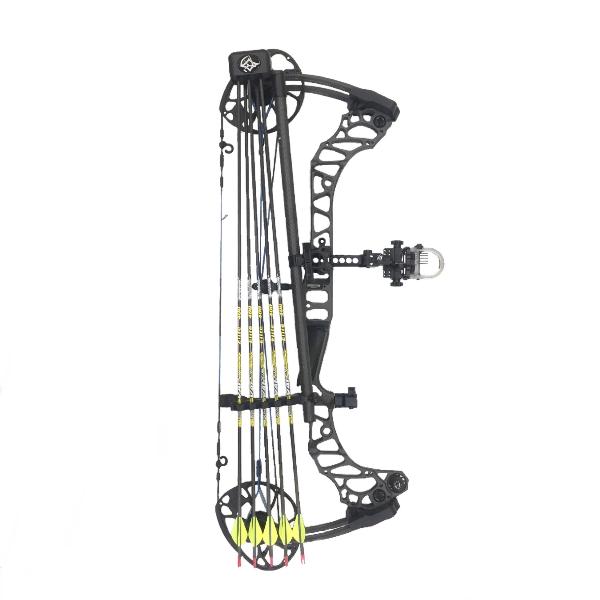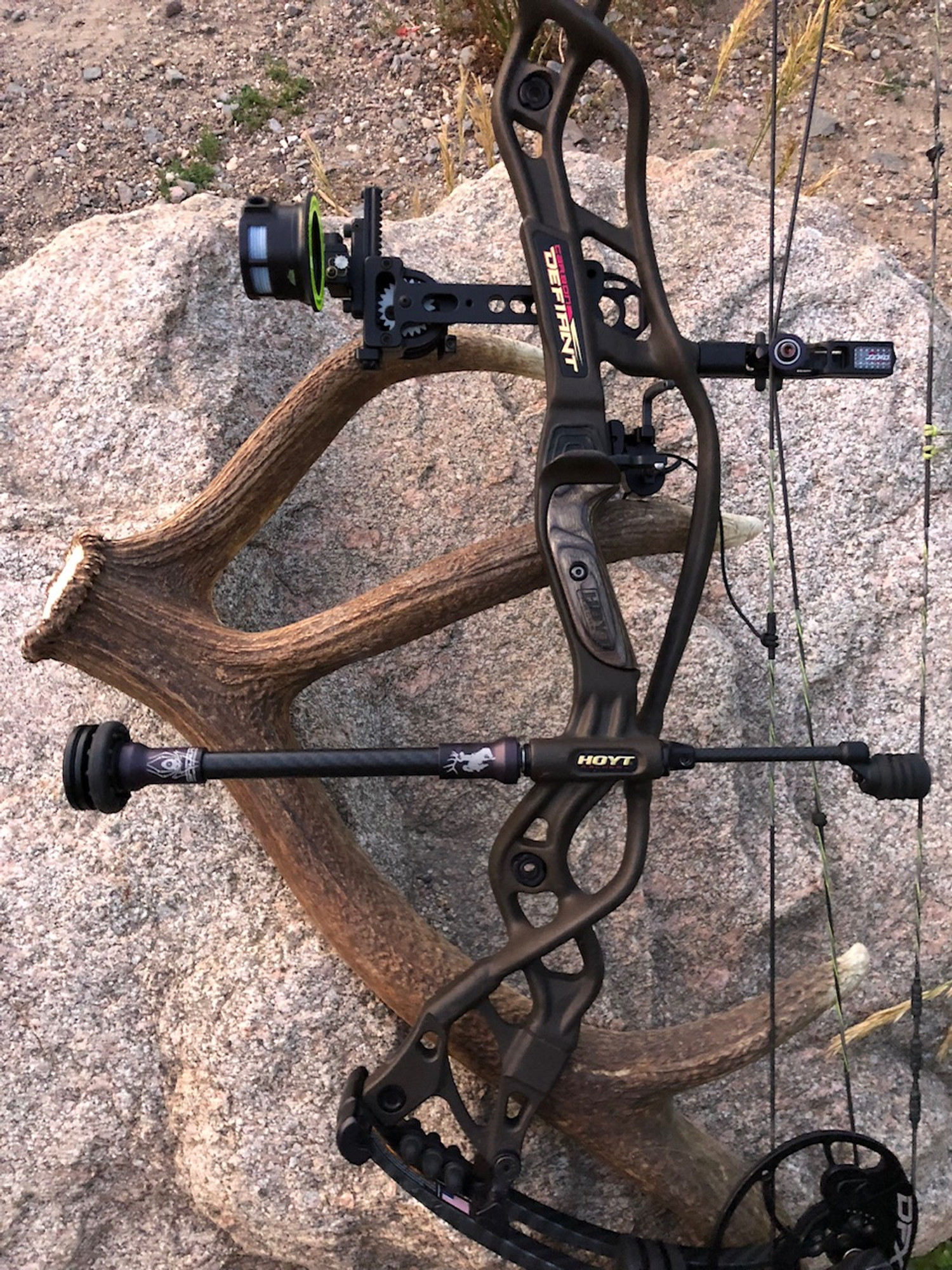Mastering Archery Stabilizers: A Full Overview for Beginners
Mastering Archery Stabilizers: A Full Overview for Beginners
Blog Article
Master the Art of Archery: Comprehending the Value of a Stabilizer in Your Configuration
Whether one is an experienced archer or just starting their journey, the value of a stabilizer in their arrangement can not be overemphasized. By recognizing the advantages of using a stabilizer, considering the right elements when choosing one, and effectively setting up and readjusting it, archers can elevate their abilities to new heights.
The Function of a Stabilizer in Archery
A stabilizer plays an essential function in archery by boosting equilibrium and reducing resonances throughout the shot. A stabilizer helps to combat these resonances by soaking up and dissipating the power (archery stabilizer).
One of the main advantages of a stabilizer is its ability to improve balance. The weight of the stabilizer helps to distribute the weight uniformly, reducing the strain on the archer's arm and boosting stability.
Along with equilibrium, a stabilizer likewise helps to lower torque. When an archer launches the bowstring, there is an all-natural tendency for the bow to turn in the hand. This rotation, understood as torque, can cause the arrow to veer off-course. The weight and design of a stabilizer neutralize this turning, guaranteeing a more precise and regular shot.
Advantages of Utilizing a Stabilizer
The use of a stabilizer in archery provides countless advantages that enhance an archer's performance and general capturing experience. By absorbing and dampening these vibrations, the stabilizer boosts the stability of the bow, permitting for more exact and regular shots.
Secondly, a stabilizer assists to balance the bow by including weight to the front end. This weight circulation counteracts the natural propensity of the bow to tip ahead upon release, decreasing the quantity of movement and improving the archer's capacity to keep objective on target.

Lastly, a stabilizer can also serve as a shock absorber, reducing the shock and recoil experienced upon launch. This not only enhances the comfort of capturing but likewise reduces the risk of injury or pressure on the archer's body.
Exactly How a Stabilizer Improves Precision
Enhancing the accuracy of an archer's shots, a stabilizer plays a vital role in boosting overall efficiency. archery stabilizer. By adding stability to the bow, a stabilizer helps reduce the unwanted motion and resonance that can occur during a shot. This reduction in activity enables the archer to keep a stable goal, leading to more constant and exact shots

Furthermore, a stabilizer assists to moisten resonances that occur upon launch. These vibrations can cause the bow to shake, influencing the arrow's trajectory and accuracy. By absorbing and dissipating these resonances, a stabilizer assists to maintain the bow's stability and ensure a precise and smooth shot.
Furthermore, a stabilizer can additionally help in balancing view publisher site the weight circulation of the bow (archery stabilizer). By including weight to the front of the bow, a stabilizer assists to stabilize the weight of accessories, such as quivers or views, which may be affixed to the bow. This well balanced weight distribution helps the archer preserve a constant and regulated capturing setting, causing enhanced precision
Elements to Take Into Consideration When Selecting a Stabilizer
When picking a stabilizer for your bow, it is essential to consider a number of factors that will add to its total efficiency and viability for your private capturing design. The very first element to consider is the size of the stabilizer. Stabilizers come in different sizes, ranging from brief to long. Longer stabilizers normally supply more stability and equilibrium, however they can also be larger and harder to maneuver. Shorter stabilizers, on the other hand, provide better ability to move yet may sacrifice read this some stability.
Another factor to take into consideration is the weight of the stabilizer. The weight of the stabilizer can affect the balance of your bow.
Additionally, it is very important to consider the design and building and construction of the stabilizer. Some stabilizers have flexible attributes, such as flexible length or adjustable weights, which allow you to customize the stabilizer to your particular needs. The products used in the building of the stabilizer can likewise impact its effectiveness. Carbon fiber stabilizers are sturdy and light-weight, while light weight aluminum stabilizers provide an equilibrium between weight and rigidness.
Different stabilizers might work better for particular shooting designs, such as target capturing or searching. It is a good idea to seek advice from with knowledgeable archers or specialists to figure out which stabilizer will best fit your specific demands.
Tips for Correctly Changing a stabilizer and installing
Correct installation and modification of a stabilizer is important for enhancing its performance and making certain optimum shooting accuracy. When mounting a stabilizer, it is essential to adhere to a couple of vital steps to guarantee its performance. Determine the appropriate length of the stabilizer based on your shooting design and choices. Longer stabilizers give more stability however can be less manoeuvrable, while shorter stabilizers provide boosted maneuverability yet might sacrifice stability. Attach the stabilizer to the bow utilizing the given installing hardware once you have actually chosen the appropriate length. Ensure that the stabilizer is firmly fastened and lined up with the bow's riser.
After installing the stabilizer, it is essential to make changes to attain the desired equilibrium and shot uniformity. Beginning by readjusting the weight circulation along the stabilizer. This can be done by adding or eliminating weights from the stabilizer's weight system. Trying out various weight configurations to find the balance that functions best for you. Additionally, take into consideration changing the angle of the stabilizer to adjust the shot. A slight ahead or in reverse tilt can impact the bow's equilibrium and how it responds during the shot.

Verdict
To conclude, a stabilizer plays a critical duty Read More Here in archery by enhancing accuracy and decreasing bow torque. By adding weight to the bow, it assists to balance and support the shot. When picking a stabilizer, factors such as size, weight, and product ought to be thought about to satisfy specific needs. Correct installment and modification of the stabilizer are likewise vital for ideal performance. Understanding using a stabilizer can significantly enhance the archer's ability and accuracy.
Additionally, a stabilizer can also help in balancing the weight distribution of the bow. By including weight to the front of the bow, a stabilizer helps to stabilize the weight of accessories, such as quivers or views, which may be attached to the bow. Some stabilizers have flexible functions, such as flexible length or adjustable weights, which permit you to personalize the stabilizer to your details requirements. Carbon fiber stabilizers are light-weight and durable, while light weight aluminum stabilizers use an equilibrium in between weight and rigidity.
Longer stabilizers supply even more stability however can be less manoeuvrable, while shorter stabilizers supply raised ability to move yet might sacrifice stability.
Report this page